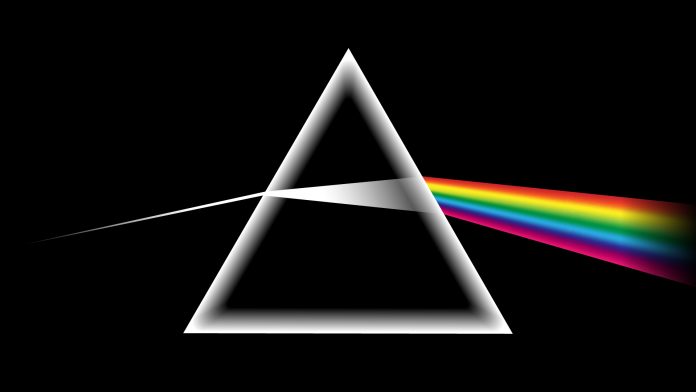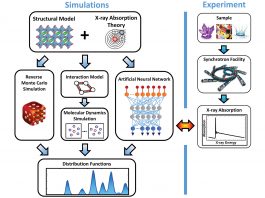The Coblentz Society aims to promote and foster the understanding and application of vibrational spectroscopy.
Vibrational spectroscopy is the study of the motion of specific chemical bonds in a molecule. Each bond in a molecule will interact with a specific wavelength of light and because each molecule is unique, the wavelength of light that interacts will be slightly different depending on the structure of the molecule. This fundamental principal provides a ‘fingerprint’ (a unique signature) for any molecule. This means that a molecule can be identified from its vibrational spectrum.
Besides providing a unique signature for a molecule, the amount of light that interacts with a molecule is directly related to how much of the molecule is present. Therefore, vibrational spectroscopy can be used to measure how much of a material is present in a sample. Certain molecular vibrations absorb light more strongly, while other molecular vibrations are stronger at scattering light. Thus, there are two common types of vibrational spectroscopy:
- Infrared spectroscopy: the wavelength of light is directly absorbed by the sample; and
- Raman spectroscopy: the interaction of the light with the sample is not a simple absorption but a scattering process.
Both techniques provide similar data but have strengths and weakness that define which technique is applied to what sample in which situation.
Industrial applications of vibrational spectroscopy
As mentioned above, vibrational spectroscopy is a fingerprinting technique that can be used to identify a material. Compared to other techniques that are used to identify and quantify materials, vibrational spectroscopy has the benefit of being specific, and in many cases, non-destructive. For example, mass spectrometry can also be used to identify a material but due to the nature of the technique, the sample is destroyed. One can collect a vibrational spectrum of a sample and in most cases, the sample remains intact and undamaged.
Vibrational spectroscopy is used in almost every industry, including materials, polymers and plastics, aerospace, fine chemicals, medicine, pharmaceuticals, textiles, art and archeology, semiconductors and foods. If the technique is not used directly in that industry, it is commonly used indirectly somewhere in the supply chain for an industry to characterise an ingredient or a product. One example of this is in the medical device industry, where the device manufacturer does not use vibrational spectroscopy, but their supplier of tubing would use it to characterise and validate the materials of construction. Another example comes from the production of meat.
Although a poultry supplier will not use infrared spectroscopy, the supplier of the feed may use vibrational spectroscopy to determine the nutrient profile of feed. In academia, vibrational spectroscopy is used to measure characteristics to help untangle fundamental scientific problems – ranging from research at academic institutions to quantitate how much of a product is in a mixture from a chemical reaction, to research at large teaching hospitals to understand the fundamentals of cancer.
Moreover, one of the most exciting developments occurring in vibrational spectroscopy right now is the trend to move the techniques out of the laboratory and into the field. These efforts are aimed at taking the techniques and allowing non-scientific users to make measurements and obtain data in the field without having to take a sample back to the lab. Some areas where this is having a great deal of impact are in law enforcement and security, where a white powder can be quickly identified, and agriculture, where the amount of sugar in a piece of fruit can be measured while it is still on the plant. These applications are enabled by the increasing miniaturisation of the instrumentation and the ability to use data analysis tools that reside ‘in the cloud’ to interpret the information and recommend action plans.
The Coblentz Society
Our mission at the Coblentz Society is to foster the understanding and application of vibrational spectroscopy. To that aim, the society has a number of areas that we work in. We have an extensive education effort where our members teach the next generation of spectroscopists. We participate in technical conferences which is also an educational effort to provide information on cutting edge applications of our technical area. Additionally, we offer several prestigious awards to recognise the outstanding vibrational spectroscopists in both academia and industry.
We have an extensive mentoring program where our more experienced members interact with younger members in order to provide them with advice on things such as career directions, employment opportunities and general advice on what it is like to practice vibrational spectroscopy in a particular area. We also have an extensive program to support younger scientists with scholarships, and more importantly to help them deal with the financial impact of being a young scientist who wants to participate in the community but may not be able to afford the travel or deal with the issues of dependent care.
Many of our members have had to grapple with the ‘two body problem’ (a catch-phrase used to describe the dilemma a couple faces when trying to achieve satisfying scientific careers, whilst dealing with geography and their own professional goals), and can at least give advice on what worked for them.
Ellen V Miseo PhD
President
The Coblentz Society
+1 781 724 9040
ellen.miseo@gmail.com
http://www.coblentz.org
Please note, this article will also appear in the second edition of our new quarterly publication.









